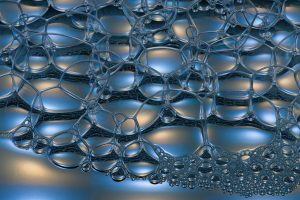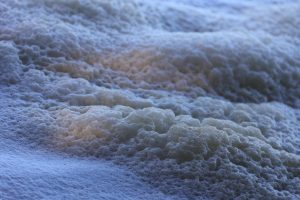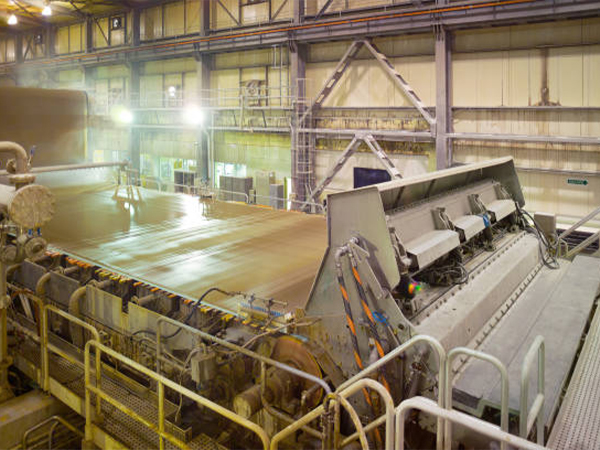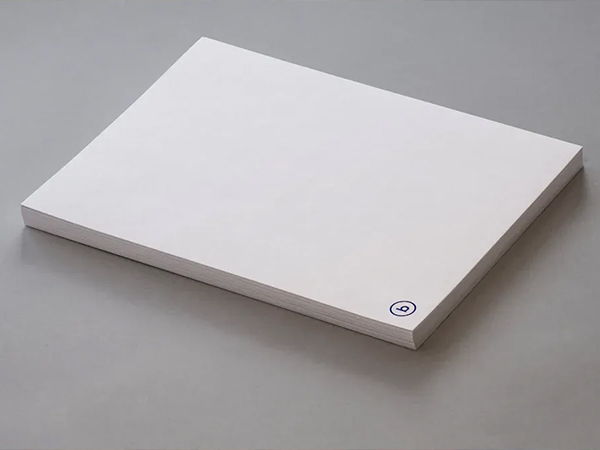
Polyether Antifoams play a vital role in keeping your papermaking process efficient and stable by controlling foam at every stage. You notice smoother operations, higher product quality, and less downtime when you rely on these advanced additives. Many in the industry believe polyether antifoams are greasy, toxic, or difficult to work with, but these are common misconceptions:
- They do not minimize efficiency in formulations.
- They are not water-insoluble or oil-insoluble.
- They are not limited to low HLB values or industrial use.
- They do not resemble greasy or toxic compounds.
You choose polyether antifoams because they deliver reliable performance where it matters most in papermaking.
Key Takeaways
- Polyether Antifoams enhance efficiency by controlling foam, leading to smoother operations and higher product quality.
- Proper dosing and application of antifoams are crucial. Add them at high-foam points like the pulper and stock chest for best results.
- These antifoams excel at managing microfoam, which helps maintain consistent paper quality and reduces operational issues.
- Choosing polyether antifoams supports sustainability goals by minimizing waste and meeting environmental regulations.
- Regular monitoring of foam levels and product performance ensures optimal use of antifoams and helps identify necessary adjustments.
Foam Issues

Production Disruptions
Foam can disrupt your paper production line in several ways. You often see dissolved air coming out of solution as tiny bubbles, which quickly form foam. Entrained air, made up of small bubbles moving with the fibers, also contributes to foam buildup. Large bubbles rise to the surface and create visible foam that interferes with equipment. Mechanical factors, such as leaky pump seals, introduce unnecessary air into the system. Chemical factors, including surface-active materials like deinking agents and certain wet-end additives, stabilize foam and make it harder to remove.
When foam accumulates, you may experience pump cavitation, reduced flow rates, and even unplanned shutdowns. These disruptions slow down your process and increase maintenance needs.
Quality Problems
Uncontrolled foam leads to several quality defects in your paper products. The following table highlights the most common issues:
| Quality Defect | Description |
|---|---|
| Uneven Pulp Distribution | Results in inconsistent paper quality. |
| Difficulties in Draining Water | Affects the efficiency of the paper web formation process. |
| Voids in Paper Sheet | Leads to reduced strength and integrity of the final product. |
| Reduced Strength | Compromises the durability of the paper. |
| Operational Problems with Machinery | Causes downtime and increases maintenance costs. |
You may also notice inconsistent pulp quality, increased deposition, poor drainage, and improper sheet formation. These problems can lead to higher water, chemical, and energy consumption. Effluent treatment issues often arise when foam escapes into wastewater streams.
Cost Impacts
Foam-related issues increase your operating costs in several ways. Frequent production stops and equipment cleaning raise labor expenses. Poor drainage and improper sheet formation force you to use more water and chemicals, driving up material costs. Energy consumption rises as pumps and other machinery work harder to overcome foam blockages.
Polyether Antifoams help you control these costs by minimizing foam formation and stabilizing your process. You achieve better efficiency and reduce waste, which directly impacts your bottom line.
Polyether Antifoams Benefits

Fast Dispersion
You need a defoamer that acts quickly and efficiently. Polyether Antifoams disperse rapidly throughout the pulp slurry, reaching even the most challenging areas of your system. This fast action reduces surface tension, allowing trapped air to escape and preventing foam from forming in the first place. When you compare different types of defoamers, you see that polyether-based products stand out for their speed and reliability.
| Type of Defoamer | Advantage |
|---|---|
| Polyether (ester) | Fast defoaming and excellent foam inhibiting performance |
You gain immediate control over foam, which keeps your process stable and reduces the risk of costly interruptions. This quick dispersion also means you use less product, which helps you manage costs and maintain consistent paper quality.
Microfoam Control
Microfoam presents a unique challenge in papermaking, especially when you use recycled fibers. These tiny bubbles can pass through screens and felts, causing defects that are hard to detect until the final product inspection. Polyether Antifoams excel at controlling microfoam. Their molecular structure allows them to penetrate and destabilize even the smallest bubbles, ensuring a smooth and uniform paper sheet.
You notice fewer voids and improved drainage when you use these antifoams. This leads to stronger, more consistent paper. You also reduce the risk of operational problems caused by microfoam, such as sheet breaks or uneven formation. By targeting microfoam, you protect both your product quality and your equipment.
Stability in Harsh Conditions
Papermaking environments can be tough. High temperatures, variable pH levels, and aggressive chemicals all challenge the performance of additives. Polyether Antifoams maintain their effectiveness under these harsh conditions. You can rely on them to deliver consistent foam control, even when you process recycled fibers or run at high speeds.
You also support your mill’s sustainability goals by choosing these products:
- Effective foam management reduces visible pollution, which enhances community relations and supports sustainability.
- The products are designed to be environmentally friendly, which helps in aligning with sustainability goals.
- Some formulations meet strict environmental regulations, aiding manufacturers in achieving compliance.
Tip: When you select Polyether Antifoams, you not only improve operational efficiency but also demonstrate your commitment to environmental responsibility.
You benefit from stable operations, fewer quality issues, and a process that aligns with modern environmental standards.
Comparing Defoamers
Polyether vs. Silicone
You often compare polyether antifoams with silicone-based defoamers when selecting the best solution for your mill. Silicone defoamers offer strong initial foam knockdown, but they can cause deposit issues and interfere with downstream processes. Polyether antifoams provide rapid dispersion and consistent foam control without leaving residues that disrupt papermaking. You notice that polyether antifoams work well in systems with recycled fibers and variable conditions. Silicone products sometimes require higher dosages and can create compatibility problems with other wet-end chemicals.
| Feature | Polyether Antifoams | Silicone Defoamers |
|---|---|---|
| Dispersion Speed | Fast | Moderate |
| Deposit Risk | Low | Moderate-High |
| Compatibility | High | Variable |
| Microfoam Control | Excellent | Good |
You gain more stable operations and fewer interruptions when you choose polyether antifoams over silicone options.
Polyether vs. Mineral Oil
Mineral oil defoamers have served mills for decades. You may find them effective in basic foam control, but they often struggle with microfoam and recycled fiber systems. Polyether antifoams outperform mineral oil products by offering better control in harsh environments and maintaining effectiveness at lower dosages. Mineral oil defoamers can leave oily residues and increase deposit formation, which leads to more frequent cleaning and downtime. Polyether antifoams disperse quickly and minimize these risks.
- You avoid common mineral oil challenges:
- Oily deposits on machinery
- Reduced sheet quality
- Higher maintenance costs
Polyether antifoams help you maintain product quality and reduce operational expenses.
Unique Advantages
You benefit from several unique advantages when you transition to polyether antifoams. Mills sometimes face challenges during this switch, but you can overcome them with proper planning:
- Potential for deposit formation if product formulation or application is incorrect
- Need for laboratory experiments to determine deposit potential and product effectiveness
- Importance of proper feed points in the process where foam is most problematic
Polyether antifoams deliver reliable performance, especially in demanding papermaking environments. You achieve better foam control, improved compatibility with process chemicals, and enhanced sustainability. You also reduce the risk of regulatory issues by choosing products designed for environmental compliance.
Tip: Always consult with your supplier and run laboratory trials before making a full transition to polyether antifoams. This approach ensures optimal results and minimizes unexpected challenges.
Application Tips
Where to Add
You achieve the best foam control when you add antifoam at the right points in your process. Focus on areas where foam forms most rapidly, such as the pulper, stock chest, and headbox. These locations allow Polyether Antifoams to disperse quickly and prevent foam before it disrupts your system. You may also target white water loops or save-all systems if you notice persistent foam. Always consider compatibility with other process chemicals. Test new application points on a small scale before making permanent changes.
Dosing Guidance
Proper dosing ensures you get the most value from your antifoam investment. Start with the supplier’s recommended dosage, then adjust based on your mill’s specific needs. Overdosing can cause deposits or interfere with sheet formation, while underdosing leaves foam uncontrolled. Use automated dosing pumps for consistent delivery. Monitor the system closely during changes in furnish or production speed. If you switch to recycled fibers or run at higher speeds, you may need to increase the dosage slightly.
Tip: Work with your supplier to optimize dosing. Many suppliers offer on-site support and training to help you fine-tune your approach.
| Supplier | Training Options |
|---|---|
| AstenJohnson | Offers group coursework and on-site staff training tailored to mill schedules. |
| BW Papersystems | Provides specialized training for all levels, including expert-led sessions and flexible scheduling. |
Monitoring Results
You maintain efficiency by tracking key indicators after applying antifoam. Watch for changes in drainage rates, sheet quality, and visible foam. Use regular lab tests to check for microfoam and deposits. Adjust your strategy if you see unexpected results. Keep records of dosage, application points, and performance. This data helps you identify trends and make informed decisions. Adapt your monitoring as your process or raw materials change.
Note: Polyether Antifoams adapt well to different papermaking conditions, making them a reliable choice for mills with variable operations.
You gain efficiency, higher product quality, and cost savings when you choose Polyether Antifoams for your mill. Review your foam control strategy and consider these next steps:
| Step | Description |
|---|---|
| 1 | Conduct comprehensive evaluation methods beyond simple visual tests. |
| 2 | Measure air content to detect foam levels accurately. |
| 3 | Perform lab tests that go beyond eye observation to assess defoamer performance. |
Consult your supplier or run a trial to see the difference in your process.
FAQ
What makes polyether antifoams different from other defoamers?
You get rapid dispersion, strong microfoam control, and high compatibility with process chemicals. Polyether antifoams work well in harsh papermaking conditions. They leave fewer deposits than silicone or mineral oil products.
Can you use polyether antifoams with recycled fibers?
Yes, you can. Polyether antifoams perform well with recycled fibers. They control microfoam and maintain sheet quality, even when you process challenging raw materials.
How do you know if you are using the right dosage?
Monitor drainage rates, visible foam, and sheet quality.
If you see persistent foam or deposits, adjust the dosage. Suppliers often provide on-site support to help you optimize dosing.
Are polyether antifoams safe for the environment?
Many polyether antifoams meet strict environmental standards. You can choose products designed for regulatory compliance and sustainability. Always check product certifications with your supplier.
Where should you add polyether antifoams in the papermaking process?
- Add at high-foam points:
- Pulper
- Stock chest
- Headbox
You may also target white water loops if needed. Test new points before making permanent changes.






